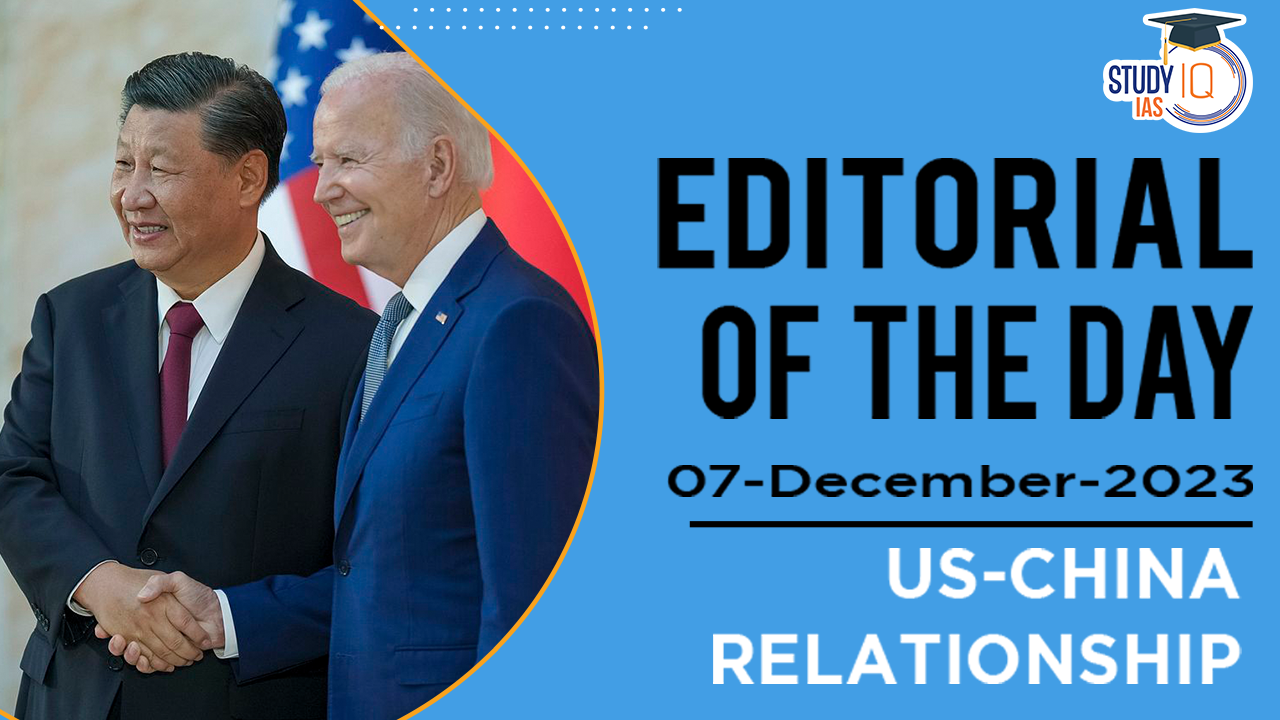Table of Contents
US-China Relationship
Context:
- S. President Joe Biden and Chinese President Xi Jinping met on November 15 in San Francisco, alongside the Asia-Pacific Economic Cooperation conference.
- This meeting aimed to improve the strained bilateral relationship, the most challenging since the establishment of diplomatic ties between the U.S. and China in 1979.
We’re now on WhatsApp. Click to Join
Key Outcomes Of the Summit
- Restoration of Military Communications: A major outcome was the restoration of military-to-military communications between the U.S. and China, essential for avoiding miscalculations between these nuclear-armed states.
- The communication channels, under the Military Maritime Consultative Agreement from 1998, were reopened.
- These were previously closed following Nancy Pelosi’s controversial visit to Taiwan in August 2022.
Taiwan as a Central Issue
- China’s Stance on Taiwan: China, advocating for the reunification of Taiwan with the mainland, perceives U.S. actions as provocative. The “one-China” policy is acknowledged by Washington, which recognizes Beijing as the sole legitimate government of China but does not endorse Taiwan as part of China. The U.S. also offers security guarantees to Taiwan under the Taiwan Relations Act.
- S. Position on Taiwan: President Biden has indicated that the U.S. would intervene if China attacked Taiwan.
- China’s Reaction to Pelosi’s Visit: Beijing condemned Pelosi’s visit, considering it a serious violation of the status quo. China responded with military drills and ballistic missile firings near Taiwan. Recently, House Speaker Kevin McCarthy met with Taiwan’s President Tsai Ing-wen in California.
Ongoing Trade Dispute
- Trade Policy and Restrictions: The U.S. has imposed several restrictions on Chinese companies.
- President Biden continued and expanded on policies initiated by the Trump administration, including blacklisting companies involved in the “Chinese military-industrial complex” and imposing controls on exports of advanced computer chips to China.
- China’s Countermeasures: In response, China banned exports of critical minerals like gallium and germanium and imposed export restrictions on graphite.
- China also tightened its anti-espionage and data protection laws, impacting foreign firms operating in China.
The Way Forward
- Shift in Approach: Despite the ongoing conflict, there appears to be a subtle shift towards coexistence and de-risking the economies of both superpowers. This pragmatic approach, diverging from the previous strategy of disengagement or ‘decoupling’, suggests a possible de-escalation of tensions in the short term.


 Indus Water Treaty 1960 Suspended by Ind...
Indus Water Treaty 1960 Suspended by Ind...
 5 Years of SVAMITVA Scheme and Its Benef...
5 Years of SVAMITVA Scheme and Its Benef...
 Places in News for UPSC 2025 for Prelims...
Places in News for UPSC 2025 for Prelims...





















